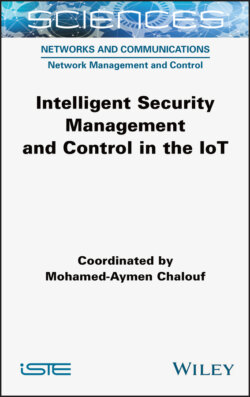Читать книгу Intelligent Security Management and Control in the IoT - Mohamed-Aymen Chalouf - Страница 28
1.4.2.3. Stage 3: calculation of the QoS score of the transmission models
ОглавлениеIn this stage, the multicriteria decision-making module should calculate the QoS score of the remaining candidate channels. The application’s QoS score SQoS(i, j) makes it possible to estimate the QoS offered to the application j when the transmission uses (MOD)im (channel i, modulation m).
SQoS(i, j) is based on the QoS parameters, that is the bandwidth, the loss rate, the delay and the jitter. The importance of these parameters depends on the application that is running. It is expressed by attributing weightings to different parameters.
The QoS SQoS(i, j) score is given by equation [1.7]:
[1.7]
where
– Bi is the bandwidth available via the channel i;
– bj is the minimal bandwidth required by the application j;
– Ei is the loss rate via the channel i;
– ej is the maximum loss rate authorized by the application j;
– Di is the average delay in the channel i;
– dj is the maximum delay supported by the application j;
– Gi is the average jitter in the channel i;
– gj is the maximum jitter supported by the application j;
– vi is the maximum speed authorized on the channel i (vi depends on the network coverage);
– V is the speed of the IoT object;
– αB is the weight of the bandwidth;
– αD is the weight of the delay;
– αG is the weight of jitter;
– αE is the weight of the loss rate;
– xi⊗yj = 1 if xi > yi, otherwise 0;
– Ai is the availability probability of the channel at the period t + 1.
The formula used to calculate the application’s QoS score j makes it possible to distinguish the different classes of service by adjusting the threshold values (bj, dj, gi, ej) and the weight criteria (αB, αD, αG, αE).
